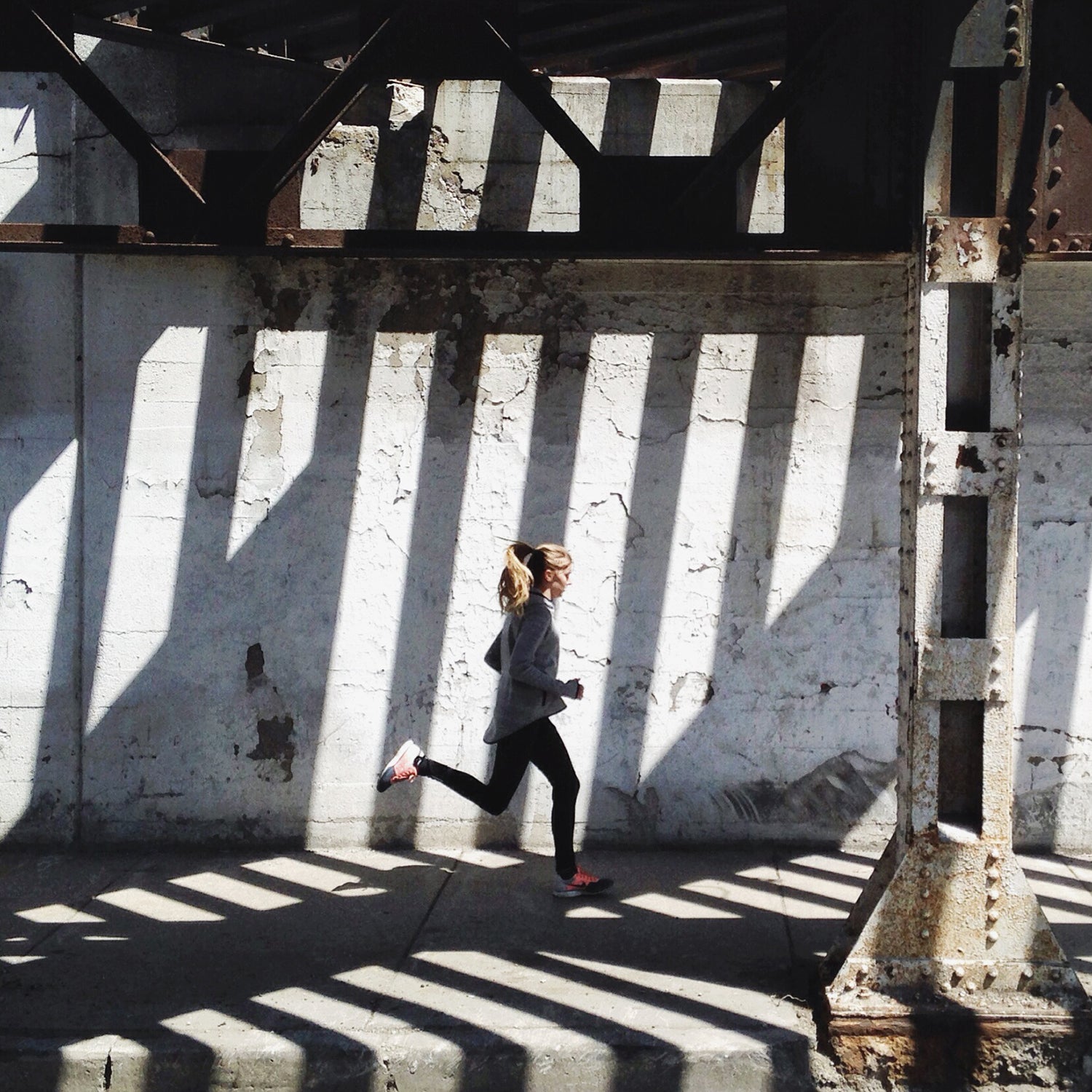Imagine living in a city that is home to one of the world’s most renowned art institutions, as well as a robust music and culinary scene–but also having a 25,000-square mile glacial lake at your doorstep. The citizens of Chicago don’t have to; it’s their daily reality.
The Midwestern city on the southern shore of Lake Michigan might be the perfect hybrid: all the benefits of a major metropolis, balanced by a plethora of of opportunities to get outside. While the Palos and Lakefront systems will delight road and trails runners alike, those who feel more at home 20 feet off the ground can find refuge either in one of Chicago’s many gyms or on some of the world-class routes just outside of the city. And as for cycling: despite the fierce weather and gnarly traffic, you’ll find road riders, mountain bikers, commuters, hipsters on fixies, and even a vibrant cyclocross community.
Whether you’re a dirtbag climber, weekend warrior, or newbie who just bought their first pair of running shoes, here are our favorite ways to get out and stay active in the Windy City.
Best Runs
Despite the summertime mugginess and vicious winters, Chicago is a damn good place to be a runner. From lakefront jaunts to short, scenic loops to bona fide trail runs, here are a few of our Windy City favorites.
–Martin Fritz Huber
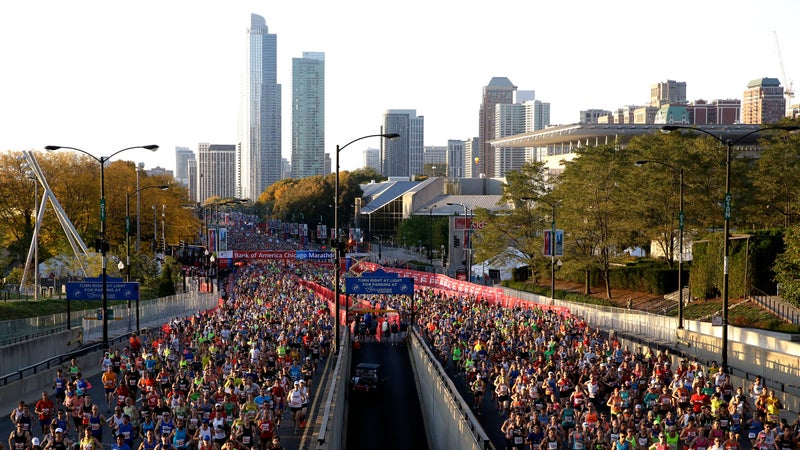
Lakefront Trail
Distance: 18 miles
Type of run: Paved trail
For: Chicago newbies
It doesn’t get more Chicago than the Lakefront Trail. This 18-mile stretch along the shore of Lake Michigan runs from Kathy Osterman Beach in Lincoln Park to the South Shore Cultural Center, passing famous locales like Navy Pier and Grant Park while keeping the city’s skyline in constant view. In many ways, Lakefront is a marathoner-in-training’s dream: scenic and accessible, with mile markers and drinking fountains throughout. And having access to a beautiful, clean lake to cool off in after (or during) a hot summer run is a pretty great perk.
Des Plaines River Trail
Distance: 55 miles
Type of run: Gravel
For: Woodland creatures at heart
With its northern trailhead just below the Wisconsin border and its southern end situated south of O’Hare International Airport, the Des Plaines River Trail is one of the longest trails in the greater Chicago area. Since it follows the path of the river for which it is named, the trail can at times be prone to flooding (typically during the spring), making for a muddy experience. Most days, however, this is one of the best ways to explore local forest preserves and wetlands. Access from various Metra stations, such as River Grove on the Milwaukee District/West Line and Des Plaines on the Union Pacific/Northwest Line.
Bloomingdale Trail on the 606
Distance: 2.7 miles
Type of run: Paved trail
For: Casual joggers
Throughout most of the 20th century, the Bloomingdale Line was a train servicing northwest Chicago’s manufacturing district. After a few years of inactivity at the start of the new millennium, the elevated corridor began to be repurposed into a greenway, much like New York City’s High Line project, which came into being around the same time. Unlike its Big Apple counterpart, however, the Bloomingdale Trail (also known as the 606, after Chicago’s zip code) is open to cyclists and canines. Spanning 2.7 miles, the 606 has 12 access points and is a short walk from the Western and Damen stops.
Great Western Trail
Distance: 17 Miles
Type of run: Gravel
For: Long-distance birdwatchers
Not to be confused with the 4,500-mile overland traverse from Canada to Mexico, the Illinois iteration of the Great Western Trail follows an abandoned railroad corridor from the LeRoy Oakes Forest Preserve (located roughly 25 miles west of downtown Chicago) west to the town of Sycamore. Much of the terrain is crushed limestone, so runners’ joints will be happy as they take in the wetlands of DeKalb and Kane Counties. Keep an eye out for great blue herons as you make your way along this peaceful stretch of Midwestern prairie.
Grant Park Loop
Distance: 4 miles
Type of run: Paved loop
For: Chicago first-timers
If you’re staying in downtown Chicago and don’t feel like doing an out-and-back on the Lakefront Trail—or hopping on the L post-run—an appealing alternative is to run around Grant Park. The site of both the start and finish of the Chicago Marathon, Grant Park is home to a number of popular attractions, like the Art Institute of Chicago and Buckingham Fountain. Situated between Michigan Avenue and Lake Shore Drive, the park is extremely easy to circumnavigate, even when you tack on the mini-loop of the Museum Campus on the park’s southeastern end.
Palos Trail System, Palos Forest Preserve
Distance: Up to you
Type of run: Both paved and unpaved forest trails
For: Hill-starved trail runners
Chicago-area runners desperately seeking a good hill workout can head south to the 15,000-acre Palos Forest Preserve in Cook County, where they will find a vast network of unpaved trails and undulating terrain through wetlands, forests, and secluded ravines. This is Midwest trail running at its finest. To experience it yourself, head to the Pulaski Woods parking lot, where you can embark on any number of routes. Singletrack abounds, so be wary of mountain bikers and brush-peeping birders.
Waterfall Glen
Distance: 9.5 miles
Type of run: Gravel loop
For: Hill-starved tempo runners
Just west of the Palos Forest Preserve lies another stellar option for runners who prefer to avoid the city’s asphalt. The loop around Waterfall Glen Forest Preserve offers nearly ten miles of wooded running atop crushed gravel. (Yes, there are waterfalls, too.) While it may be easy on your ankles, the terrain will challenge you as a runner. In stark contrast to the epic flatness of Chicago’s Lakefront Trail, this run includes significant climbs. Like Lakefront, the Waterfall Glen loop has mile markers—the joy of tempo runners everywhere. Best to start (and hopefully finish) at the Northgate parking lot.
Busse Woods Loop
Distance: 8 miles
Type of run: Paved loop
For: Running leaf-peepers
The Ned Brown Preserve, locally referred to as the Busse Woods, is a 3,558-acre sanctuary situated a few miles northwest of O’Hare International Airport. If you don’t mind having cyclists whiz by on road bikes, the paved loop around the preserve is a great run along a scenic eight-mile stretch beneath towering oaks and maples. For many, the highlight of a visit to the Busse Woods is a stop at the 17-acre enclosed elk pasture, where you can behold these majestic animals at close range.
Fox River Trail
Distance: 40 miles
Type of run: Paved trail
For: Ultrarunners in training
The Fox River Trail is made for runners who like to do their workouts in the vicinity of rushing water. This paved path follows the route of its namesake due south from Algonquin to Oswego, a distance of almost 40 miles. While tackling the entire trail in one go is very doable for cyclists, the feat will be possible only for ultrarunners who aren’t pavement-averse. However, since this section of the Fox River is continually flanked by Chicago suburbs, the trail is very accessible from various Metra stations. Our recommendation: Jump on the trail near the Geneva station, and follow the river for roughly nine miles to Aurora. From there, an hourlong train ride will take you back to downtown Chicago.
Northerly Island Loop
Distance: 1 mile
Type of run: Paved loop
For: Lunchtime joggers
The brief but scenic Northerly Island Loop is a good run for those who don’t have the time or desire to venture too far from downtown. The site of Chicago’s Adler Planetarium, Northerly Island is a manmade peninsula abutting the Museum Campus off Grant Park. The area recently received a significant makeover, which includes a mile-long, 12-foot-wide concrete trail, from which one can take in Northerly Island’s abundant flora and migratory bird populations. The views of the Chicago skyline aren’t bad either.
Best Rides
The Windy City is known for many things: deep-dish pizza, blues music, and that very shiny, giant bean. However, in the last decade, the city has also become known as a cycling hub, adding miles of bike lanes and to an already extensive network of trails that branch out into the far-flung suburbs.
—Melanie Wong
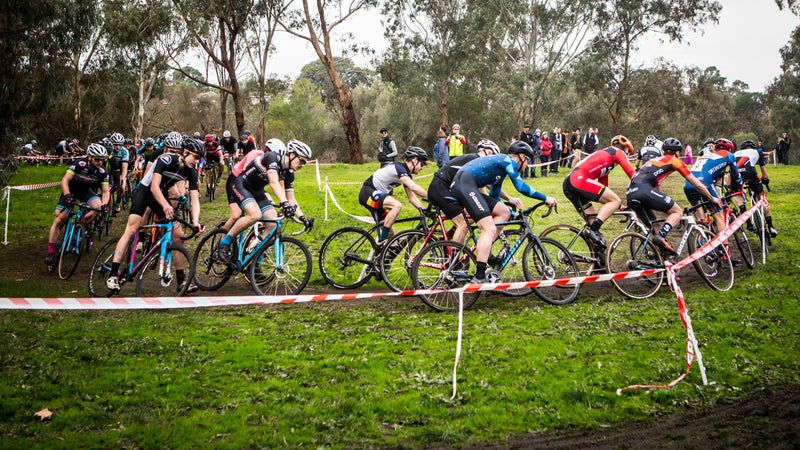
Lakefront Trail and Northerly Island
Distance: 19 miles
Elevation gain: 185 feet
For: Joyriders
The Chicago Lakefront Trail is a quintessential part of outdoor life in the city, spanning more than 18 miles along the Lake Michigan shoreline. Riding south, it begins at Osterman Beach (just off the Bryn Mawr station on the Red Line) and ends at the South Shore Cultural Center. This leisurely ride is perfect for the whole family or for a cruising tour of some of Chicago’s most iconic sites. Roll past popular beaches, such as Ohio Street, Hollywood, and Oak Street, and famous sites like Navy Pier, Soldier Field, and Lincoln Park, all while taking in the famous city skyline. Add a couple miles by detouring onto brand-new Northerly Island, a 91-acre peninsula dedicated to wildlife and nature. From the Lakefront Trail’s end, either pedal back for more mileage or hop onto the train to ride home.
The Lakefront is a popular path shared by runners, dog walkers, and rollerbladers, so stay alert and keep your speed in check. We recommend going early in the day or on weekdays to avoid the crowds.
North Shore Loop
Distance: 40 to 50 miles
Elevation gain: 350 feet
For: Serious roadies
For a longer ride on less-congested roads, many serious cyclists head to Chicago’s beautiful northern suburbs. Start in any of the city’s northern neighborhoods—like Rogers Park or Edgewater—and head north via Damen Avenue, then Custer Avenue, and finally Judson Avenue before connecting to Sheridan Avenue. (Keep angling toward Lake Michigan and you’re sure to eventually hit Sheridan.)
Once on Sheridan, hang tight through traffic while riding past the picturesque Northwestern University campus and the Baha’i Temple. Traffic gradually thins out, giving way to tree-lined streets and stately homes. Head into Highland Park, where you can stop for an espresso or lunch downtown. On the way back, take St. John’s Avenue, then Green Bay Road, and finally Winnetka Avenue to connect back to Sheridan. Depending on where you start, this can be a 40- to 50-mile round-trip.
For a high-speed, adrenaline-infused version of this route, join one of the notorious weekend group rides such as Judson (starting in Evanston) or the Triple X ride (starting in Wicker Park). But be warned: These group rides are not for beginners and generally involve high speeds.
Botanical Gardens to Wisconsin
Distance: 80 miles
Elevation gain: About 1,000 feet, depending on route
For: Weekend Warriors
Get away from the traffic by hopping onto Chicago’s L and Metra (the regional rail system) and disembarking at the Braeside Metra station. You’ll start this 80-mile ride in Glencoe, just around the corner from the Chicago Botanical Gardens. Head north either on Green Bay Road or the North Shore Trail, which runs alongside the Metra tracks. You’ll pass Fort Sheridan, a historic U.S. Army installation turned suburban town. Just after Fort Sheridan, catch the Robert McClory Bike Path at the corner of Sheridan Road and Old Elm Road. The route gets increasingly rural from here, and the only motorist you’ll likely have to deal with is a passing train. You can take the bike path clear into Wisconsin or hop off after the town of Waukegan and ride adjacent roads, also to Wisconsin. If you do, we suggest taking North Avenue and Sheridan Road.
To return home, we suggest taking a different route for variety—either hug the lakeshore south or go farther inland through Gurnee. You can also hop onto the Metra at any point if you’ve had enough. This ride is definitely off the beaten path but provides some rolling terrain through elegant communities and pleasant green spaces.
Kettle Moraine
Distance: Up to 27 miles
Elevation gain: 1,000-plus feet
For: Singletrack seekers
The Chicago area is not exactly known for its mountains, so singletrack seekers need to drive a bit to find quality riding. Specifically, about two hours north to Southern Kettle Moraine State Forest in Wisconsin, where you’ll find about 27 miles of mountain bike trails. Split into two systems—the John Muir and the Emma Carlin Trails—the routes here are diverse, ranging from flat and smooth to moderately rocky with some tougher obstacles. Riders wind through forests, sandier areas, open fields, and punchy hills. You can easily spend the whole day here.
We recommend the 12-mile Muir Blue Loop for speed and challenge. Afterward, stop in the nearby town of Palmyra for lunch and coffee. Pro tip: Kettle Moraine is a considerable drive from Chicago, so avoid weekday traffic by making it a weekend affair.
The Salt Creek Trail
Distance: 27 miles one way
Elevation gain: 500 feet
For: Nature lovers
A more recent addition to Chicagoland’s trail network, the Salt Creek Trail stretches 27 miles from the Brookfield Zoo, in Chicago’s western suburbs, north to the Busse Woods Reservoir in Elk Grove Village. The final result, decades in the making, is a wide and smooth path ideal for cyclists looking for a convenient, tranquil road ride.
From the zoo heading north, riders will pedal through forest preserves alongside the river and over a number of bridges. Don’t expect much elevation change, but you might spot some wildlife. Most of the trail is pretty well-marked, but there are some road crossings and the trail can be a bit confusing to pick up at certain parts—we recommend bringing your phone or GPS.
Crystal Lake
Distance: 18 to 50 miles
Elevation gain: 900 to 2,000 feet
For: Masochists
More ambitious riders with at least a half-day to spare should venture west of Chicago for a respite from the flat terrain. The community of Crystal Lake, accessible by the Metra, is located a little more than an hour by train from downtown Chicago and is dotted with lakes, farms, and punchy hills.
If it’s climbing you’re looking for, ride northwest for five miles following the tracks from the Crystal Lake Metra station to the Boger Bog Conservation Area. This is the gateway to a rural area chock-full of scenic meadows and steep little hills. Any road with “hill” or “valley” in its name is a good bet, but Bull Valley Road, Valley Hill Road, and Mason Hill Road have guaranteed elevation spikes.
Alternatively, you can ride south or west from the Metra station for a pleasant jaunt around the actual Crystal Lake (west of town) or the Three Oaks Recreation Area (south of town). You can easily put together a 50-mile ride in and around Crystal Lake with a respectable 2,000-plus feet of elevation gain. Take some time to check out the quaint downtown area as well.
Best Climbs
Just because you live in the doesn’t mean that there’s nowhere to climb. Within a few a hours of the city is some of the best climbing in the Midwest, and with the burgeoning gym scene in Chicago, you can stay in top climbing-shape through the cold winters.
—Alex Lubben
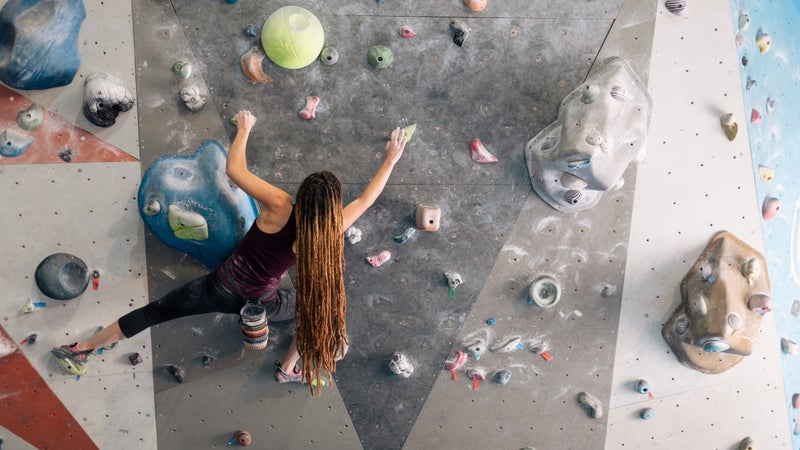
Brooklyn Boulders Chicago
Type of climb: Boulder, top rope, lead
For the: Climber who codes
When it first opened in 2009, New York’s Brooklyn Boulders set a new standard for climbing gyms. The franchise took what it learned from its original location and expanded into a . The West Loop space boasts extensive rope climbing on 50-foot walls, a good deal of which is reserved for lead climbing. The highest point of its impressive bouldering area maxes out at 17 feet—a dizzying height as far as indoor bouldering goes. And while the franchise may be known for mixing startup culture with climbing, the intelligent route setting and the enormity of this gym make it a great place for purists and newcomers alike.
Get a day pass for $25 (gear is an extra $11). Membership costs $125 per month or $1,250 annually.
First Ascent
Type of climb: Boulder, top rope, lead
For: Northside crushers
gyms were launched in 2015 by a group of local climbers looking to nurture the climbing community in their hometown. Today, with four locations in Chicago and classes geared toward getting climbers ready to head outside, they have succeeded.
The Avondale space has 60-foot walls and a massive bouldering section that include top-out features. The bouldering-only branch in Uptown, where inventive setters take full advantage of a 45-foot-wide overhanging section known to members as the “mega arch,” was expanded in late 2018 to offer indoor bike parking and a coworking space.
Day passes at either location are $18. Memberships, which give you access to both gyms, are $75 per month or $825 annually.
Devil’s Lake
Type of climb: Bouldering, top rope, trad
For: Midwest trad enthusiasts
As one of the Midwest’s most storied climbing areas, Devil’s Lake is home to no-bolt crags where first-rate boulder problems and tight-finger cracks are the main attractions. This is where John Gill pioneered bouldering and Wisconsin climbing legend Pete Cleveland established his Son of Great Chimney, a gently overhanging trad route over a quartzite buttress that was likely the hardest climb in the country when it was first onsighted in 1968. One should expect big runout leads on slippery quartzite rock, but if that sounds a little too intense, there are about a thousand easier bouldering problems and top-rope routes in the area. At about three hours northwest of the city on I-90, Devil’s Lake arguably has the best ratio of travel time to quality of climbing near Chicago.
Governor Dodge State Park
Type of climb: Bouldering
For: Crowd-averse boulderers
, tucked away in southwestern Wisconsin, doesn’t have the storied climbing history of Devil’s Lake, but that means it doesn’t get as crowded. Dodge is known for a variety of problems for all ability levels, though there are a few bolted routes as well. It also plays host to the occasional Wisconsin Climber’s Association–sponsored competition.
Head to the north section of the park, near the , for the most problems.
Mississippi Palisades State Park
Type of climb: Top rope, bouldering
For: ���ϳԹ��� newbies
This lesser-known area—which, at a 2.5-hour drive directly west of the city, makes it some of the closest outdoor climbing you’ll find from Chicago—has some solid intermediate top-rope routes scattered among a set of limestone crags, which pop up from the surrounding flats on the shores of the Mississippi River. It’s a great place to go if you’re new to climbing outside: The top ropes are easy to set up, and the grades max out at about a 5.11. A convenient campground is nearby, but you’ll need to reserve a spot in advance if you decide to spend the night.
Red River Gorge
Type of climb: Boulder, top rope, sport, trad
For: Road trippers
We know, this isn’t in or even that close to Chicago, but ask any serious Midwestern climber and they’ll say the six-hour pilgrimage south to in central Kentucky is a must. With a huge variety of sport climbs, trad climbs, and boulders, many consider this one of the top crags in the States.
Pro tip: Be sure to stop by , the local rendezvous point for the climbing community at the Red.
Best Places to Refuel
Any hardworking Midwesterner knows that you don’t get big shoulders by skipping your recovery meals. And while the region gets a bit of a bad rap for food (you put potato chips on casseroles?), Chicago’s dining scene is not to be underestimated.
—A���������ٴDz�
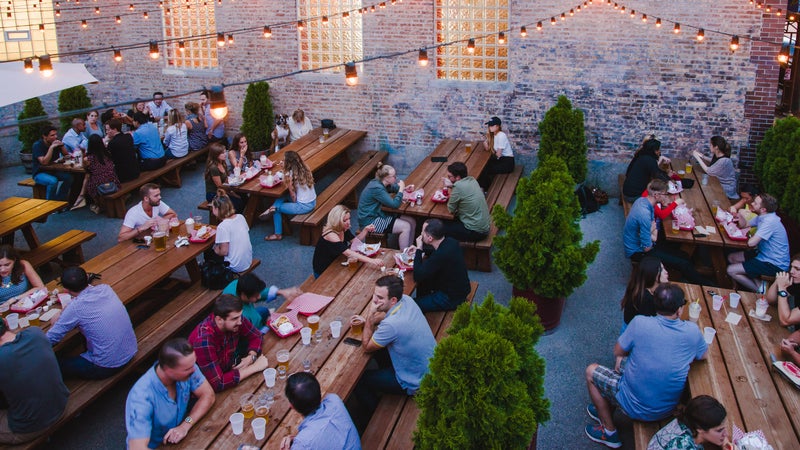
Sultan’s Market
“Chicago has mastered the art of family owned, quickly served, inexpensive sandwiches,” explains Conrad Hartwick Tufte, a Chicago-based sales rep for a major bicycling manufacturer, before saying that this small Wicker Park market is his favorite sandwich shop in the city. For $3.75, you get a killer falafel with all the fixings—cheap enough that you don’t feel bad about buying two after a particularly gnarly ride. For fans of capsaicin, Sultan’s will spike your falafel with a hit of sriracha—just ask for it spicy.
2057 West North Avenue; 773-235-3072;
Green Street Local
Terrific food, a wide beer selection, and a true local vibe make this spot a favorite for Chicago Marathon race director Carey Pinkowski, who likes the Bikram Quinoa Bowl, which has red bell pepper, red onion, jalapeno, plum tomato, pomegranate, cilantro, avocado, and extra virgin olive oil. We like the West Loop Porridge, a hot, creamy, nourishing mash of polenta, caramelized banana, strawberries, blueberries, raspberries, honey, caramel, and sea salt. For what it’s worth, the chefs at Green Street Local are extremely savvy at navigating food allergies and dietary restrictions.
130 South Green Street; 312-226-6565;
MAD Social
Sure, New York City may be the brunch capitol of the world, but Chicago’s not far behind, and this sleek spot (beautiful dark wood, exposed brick, and inviting leather booths) is one of the city’s best. Pinkowski suggests the MAD Shakshuka: oven-baked eggs in a sun-dried tomato sauce served with roasted potatoes, spinach, peppers, mushrooms, toast, and fresh herbs. MAD Social also has great cocktails, which won’t help with your recovery but just might take the sting out of that long run.
1140 West Madison Street; 312-243-2097;
Kanela Breakfast Club
This Greek-infused American brunch restaurant, with five locations across the city, offers a good mix of healthy items—like chia seed pudding and Greek yogurt smoothies—and not-so-healthy ones. For a real carb hit after a tough workout, order the Nutella s’mores waffle.
Various locations;
The Park Grill
Runners training for the Chicago Marathon often cruise up and down the lakefront, making the Park Grill, on the northern edge of Millennium Park, a perfect post-workout stop. The house burger features free-range beef from Strauss Farms, in nearby Wisconsin, topped with arugula, tomato confit, and spicy horseradish aioli. Yes, this is a touristy spot, but the food is solid and its location is hard to beat.
11 North Michigan Avenue; 312-521-7275;
Small Cheval
Near the 606 trail is the little-brother restaurant of Au Cheval, which is critically acclaimed for having one of the best burgers in the country. Small Cheval doesn’t disappoint, either, but it’s pricy: A burger plus fries and a drink can set you back nearly $20.
1732 North Milwaukee Avenue;
Tweet
Serving runners in the northern part of this city since 2003, Tweet is right off the Lakefront Trail and has a wide range of offerings. Even better, the staff is used to “sweaty runner types,” says Kuzma, so you won’t get a side of side-eye with your pancakes. “They bring you these amazing chocolate-chip bread pieces as soon as you sit down, so you can top off your glycogen stores immediately while you peruse the giant menu,” she says. “Also, they have a killer bloody mary selection.” Save this for after a long workout, when you won’t feel bad about going big with your order.
5020 North Sheridan Road; 773-728-5576;
Bongo Room
This simple breakfast and brunch spot makes pancakes so good that you will fantasize about them the next time you’re bonking. “Order one of their solid savory egg dishes for your protein, then split a stack of, say, white chocolate pretzel or key lime cheesecake pancakes for the table,” says Kuzma. There are multiple locations around the city, so no matter where you end your workout, you’ll never be far from one.
Various locations;




